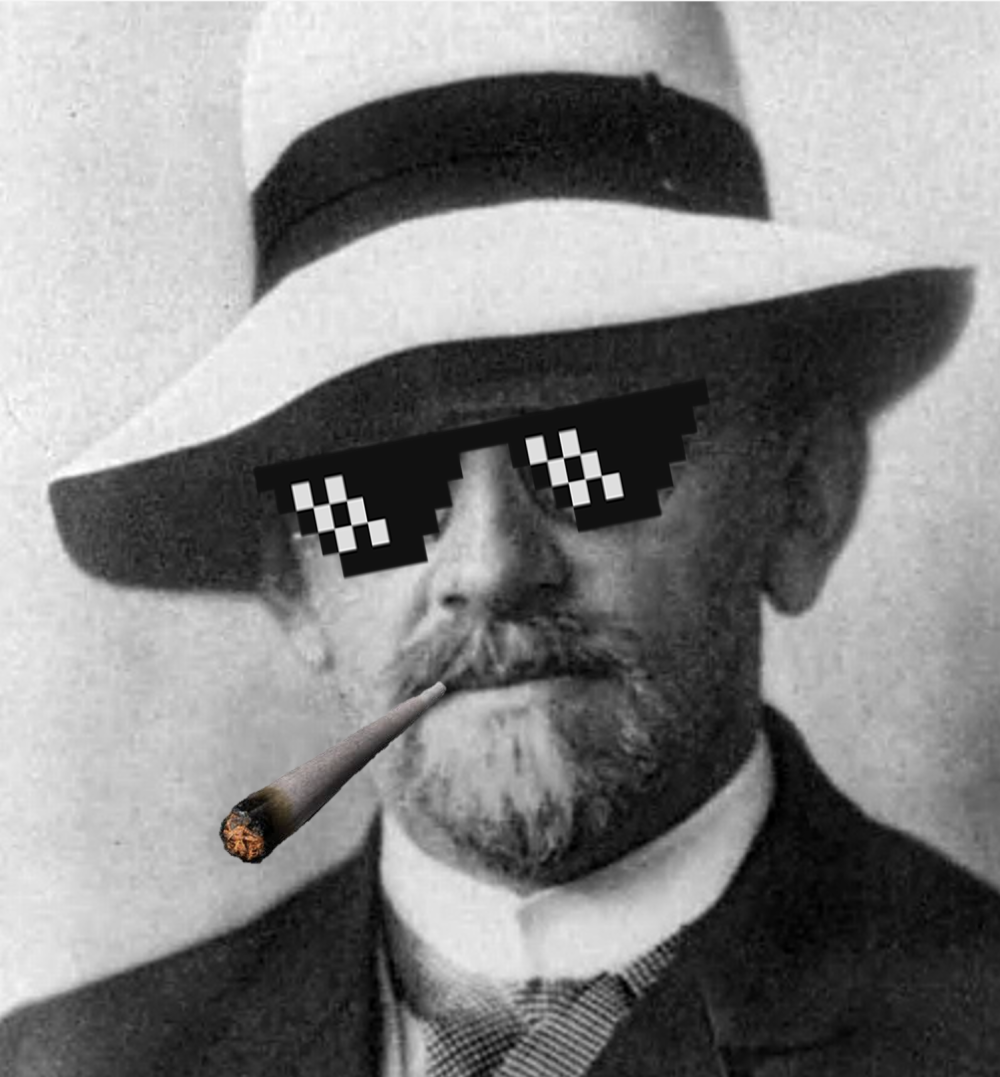Dilbert’s programme
|
|
Dilbert’s programme is a legal theory formulated by pioneering German jurist Havid Dilbert[1] in the early part of the 19th century.
Herr Rechtanswalt Dilbert proposed his programme as a solution to the “Great Pedantry Crisis”, an unfolding failure in the conceptual underpinnings of pedantry. By the 1890s, several attempts to codify the fundamental essence of punctiliousness had foundered, beset by paradox and inconsistency.
To save the day, Dilbert proposed to ground all existing theories of quibblery to a finite, complete set of definitions and legal propositions, and thereafter formulate a logical proof that these captious fundaments were the irreducible, internally consistent axioms of cavilry.
Dilbert’s programme eschewed the undefined use of any legal expression, however banal or self-evident, in any legal instrument, on the grounds that such uncertainty opens the way to an unstable state of what we now know as Cardozo indeterminacy.
Wherever Dilbert found nouns, noun phrases or even suggestive adjectives, he defined them. In 1903 he launched a public appeal, to the eaglery of the land, asking them to submit canonical legal definitions for inclusion in his programme. The response was immediate and overwhelming.
Dilbert assembled a small research team and constructed a corrugated iron shed in the grounds of Broadmoor Prison, which he called the “Glossarorium”, to house the submissions, bearing quotations illustrating expressions to be defined, that began flooding in, and bade his team write them out on little brown cards he called “riders”.
The Dilbert Hefinition
After ten full years of the programme’s operation Dilbert found, to his chagrin, that he had yet been unable to reduce a small, stubborn class of expressions. For these, logically, no better-defined term (what Dilbert called the “definand”) was available than the very expression being defined itself (the “definier”). These unusual cases he directed his research team to define exactly as they were, to avoid, he claimed all doubt of any type, kind or variety, though others suggested that it was more to do with Dilbert’s “strict Lutheran upbringing”.[2]
Thus Dilbert is credited with inventing what is now known as the “Dilbert Hefinition”, being one where the thing being defined (the “definand”, notated Đ) and the label defining it (the “definier”, notated đ) are identical, per the following expression:
- Đn ⇔ đn
Several Dilbert Hefinitions appear in the following example, first identified in Australia:[3]
An insured person (the “insured person”) may cancel (“cancel”) a policy (the “policy”) by providing us as insurer (“us” or the “insurer”) a written notice (the “written notice”) of the cancellation (the “cancellation”).
Academic debate rages to this day as to the significance of the Dilbert Hefinition. Does it convey some sort of asymptotic safety, silently constraining unarticulated metaphorical dimensions, vouchsafing a kind of literal purity to otherwise unfettered characters of the language? Some say it does; nay, it must: that this effect, however subliminal is there: this is, in effect, a surprising instance of a Biggs Hoson; and those that say that an expression defined as itself cannot exclude anything: delimiting a textual artefact to exactly itself cannot convey even that minimal particle of legal meaning that the great J. M. F. Biggs once so famously discovered.
The incompleteness paradox
All this has been rendered long-since academically moot, however, as Dilbert’s entire programme succumbed to unexpected undecidability not long after the Dilbert Hefinition was derived. On a grey September day in 1907, a postcard containing two new definitions dropped on the doormat of the little iron shed. Hilbert snatched it up. The first seemed simple enough
“Inclusive definier” shall mean all definiers whose definand includes that definier. For the avoidance of doubt, the inclusive definier itself shall be, and shall be deemed to be, an inclusive definier.
Stroking his whiskers, the great German jurist read on:
“Exclusive definier” shall mean all definiers whose definand does not includes that definier. For the avoidance of doubt, the exclusive definier itself shall —
But the remainder of the page was blank. The postcard trembled in the old man’s hand and then fell, drifting like an autumn leaf, to the mat.
Dilbert is said to have sat down, quietly, at the corner of his table and, for four or more hours, stared blankly into space.
Then, abruptly, he got up and announced, “I am just going outside and may be some time”.
Havid Dilbert exited his beloved Glossarorium, without closing the door, and was never seen again.
See also
References
- ↑ The programme and its progenitor owe nothing to Scott Adams and everything to William Archibald Spooner, by the way.
- ↑ The consistently waggish librettist Otto Büchstein wondered aloud, in a self-published pamphlet, whether “Mr Dilbert had been, perhaps, too strongly chastised for accidents sustained during toilet-training (the behavioural consequence of such accidents collectively hereafter “anal retentivity”)”
- ↑ https://www.andrewpeglermedia.com.au/
